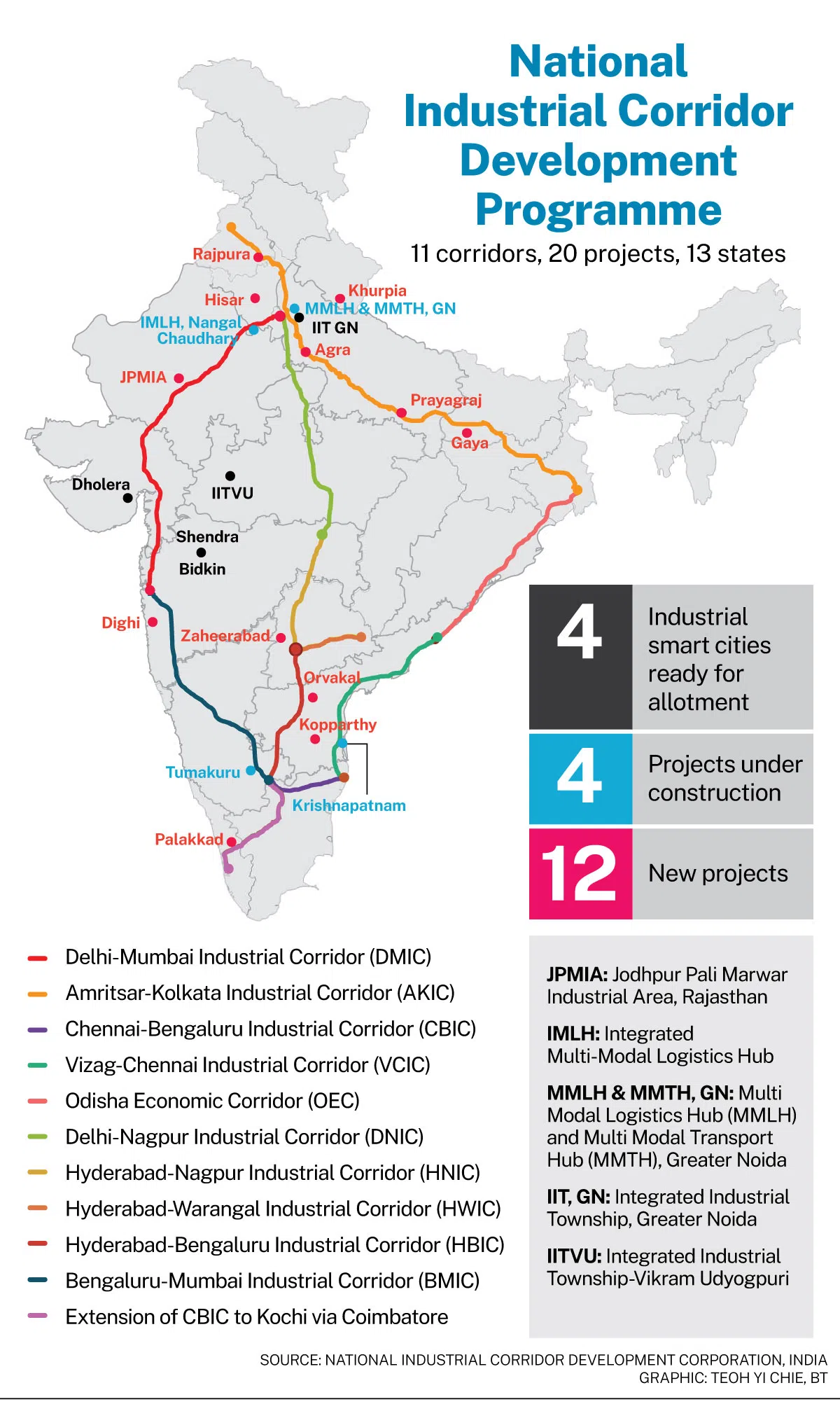Unlocking India’s potential
Its National Industrial Corridor Development Programme is transforming the country into a global manufacturing and investment hub
INDIA is embarking on its most ambitious infrastructure programme yet – the National Industrial Corridor Development Programme (NICDP).
Spearheaded by the National Industrial Corridor Development Corporation (NICDC), the initiative aims to position India as a global manufacturing and investment hub.
By developing 20 Greenfield Industrial Smart Cities, NICDC aims to create dynamic, investment-ready destinations for businesses to scale quickly and efficiently, and with reduced setup times, streamlined governance and smart, sustainable infrastructure.
These smart cities are not just industrial zones, but also designed to be hubs of innovation.
Accelerating business potential
With seamless connectivity, state-of-the-art infrastructure and pre-developed facilities, the smart cities cater to a wide variety of industries from manufacturing and electronics to biotechnology and semiconductors.
Their key features include:
• Plug-and-play infrastructure: These cities are equipped with state-of-the-art utilities, including 24/7 power supply, advanced water and wastewater treatment facilities and high-speed connectivity to help businesses commence operations from the get-go.
• Global connectivity: The smart cities are strategically located along India’s key industrial corridors.
They provide seamless access to major ports, airports, railways and highways, enabling businesses to transport goods efficiently to both domestic and global markets, reducing costs and improving their time to market.
• Sustainable and smart design: Sustainability and efficiency are prioritised through, for example, walk-to-work models, which integrate residential, commercial and industrial spaces.
Powered by renewable energy systems such as solar and wind energy, the cities reduce the carbon footprint of businesses, while ensuring energy reliability.
The success of the NICDP is already evident, with US$20 billion in investments secured.
Global companies, such as South Korea’s Hyosung’s operational textile mill, have established production facilities; Toyota-Kirloskar has an upcoming hybrid and electric vehicles plant.
Last year, the government of India approved 12 new NICDC Industrial Smart City projects worth US$3.49 billion, spanning states such as Uttarakhand, Punjab, Maharashtra, Kerala, Uttar Pradesh, Bihar, Telangana, Andhra Pradesh and Rajasthan.

Specially designed cities
These cities will be designed to reduce logistics costs, improve supply chain efficiencies as well as enhance India’s attractiveness to international companies and investors.
These projects open doors for Singaporean investors to access high-growth industrial hubs that are set to redefine global manufacturing and innovation.
Ahead of Prime Minister Narendra Modi’s visit to Singapore last September, a government and business delegation from Singapore visited key NICDC hubs, including Dholera in Gujarat, Agra and Greater Noida in Uttar Pradesh, Shendra-Bidkin and Dighi in Maharashtra, Tumakuru in Karnataka, Krishnapatnam in Andhra Pradesh and Neemrana in Rajasthan.
Business leaders from Singapore acknowledged the immense opportunities for collaboration, thanks to the investment-ready infrastructure and growth potential of these hubs.
Enterprise Singapore is actively collaborating with NICDC to strengthen bilateral ties and unlock new opportunities for Singapore investors.
India’s massive market potential, with a population of over 1.4 billion, further enhances the appeal of these hubs.
Complemented by reforms such as Production-Linked Incentive (PLI) schemes, reduced compliance burdens and attractive tax incentives, the NICDP makes it easier for foreign investors to establish and scale operations.
For Singaporean businesses, this presents an opportunity to secure a first-mover advantage in high-growth sectors such as semiconductors, artificial intelligence, electric vehicles and renewable energy.
Aiming for leadership
By blending state-of-the-art infrastructure with substantial investments, India is not just building new urban centres, but also aiming to be a leader in manufacturing and sustainability.
These industrial smart cities are set to drive economic growth, create millions of jobs and set a new standard for smart, inclusive development, contributing to India’s vision of becoming a developed nation.
Content provided by the High Commission of the Republic of India in Singapore
Decoding Asia newsletter: your guide to navigating Asia in a new global order. Sign up here to get Decoding Asia newsletter. Delivered to your inbox. Free.
Copyright SPH Media. All rights reserved.





